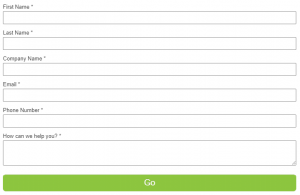AI is here and now is the time to act
With artificial intelligence (AI) where do you start? True story…I was walking through the office last week and bumped into a colleague from our analytics team, Amy, who is at the cutting edge of technology and always has the latest gadgets. As we were talking her phone buzzed and she said, “Hey have a look at this!” She clicked and we saw a delivery man with a parcel. Another couple of clicks and she is giving the delivery man instructions on where to drop the parcel in a safe place. Yes, nice use of technology but…
“You could probably take your doorbell a step further and install a chatbot or AI to manage your doorbell, meaning you wouldn’t even have to talk to the delivery drivers,” I suggested, but Amy paused for a moment, with a concerned expression on her face before continuing, “You know, ehmmm …I don’t know. I like to have control, not sure I would be confident with access to my home controlled by a bot.”
A recent Accenture Strategy survey of 1,100 executives across the globe showed that companies know AI is a critical piece of their competitive strategy moving forward. However only 45 percent say they have deployed fully sustainable AI programs that are delivering benefits as planned. That leaves 53 percent in pilot mode or early stage adoption, not yet reaping benefits and the remaining 2 percent not even in the starting blocks.¹
Why the apparent hesitancy? We all know AI and its impact have very emotive and well-embedded doomsday connotations in our popular culture but surely this is not influencing our decision making?
Is it the same reservation demonstrated by Amy and the doorbell: Trust? Or is it the impact on the workforce? Or is the potential competitive edge not fully understood/internalised?
We can’t trust what we don’t know—trust your doorbell
AI is already a big part of our daily lives—from getting song recommendations from Spotify to your bank calling to check a recent card transaction that has been triggered by AI fraud monitoring.
When it comes to Amy making her decision in order to get the most out of the doorbell she must build trust in the solution.
Trust is very high on the agenda for every AI developer—with one area attracting a lot of attention being Explainable AI (XAI). Underlying trust is the ability to understand how and why decisions were made and actions were taken. There are several initiatives in this space, such as the US Department of Defense’s Defense Advanced Research Projects Agency (DARPA) which aims to identify approaches that will give AI systems “the ability to explain their rationale, characterise their strengths and weaknesses, and convey an understanding of how they will behave in the future.”
Accenture research has shown that those who are deploying AI to their strategic advantage are doing a few common things.
Along with XAI, Responsible AI frameworks are immediately available and easily implementable. They are ensuring there is a standard approach to the deployment and governance of AI solutions. By providing clear rules of engagement, responsible AI allows organisations under public and regulatory scrutiny to innovate and realise the transformative potential of AI that is both compelling and accountable. By using design-led thinking, organisations examine core ethical questions in context, evaluate the adequacy of policies and programs, and create a set of value-driven requirements governing AI solutions. The framework is based on four foundations: governance, design, monitor and train. This framework provides the structure to enable a balanced, human and smart deployment that compliments, enhances and fuels growth for an organisation.
Would Amy feel more confident letting the doorbell control who can enter her home at certain times under certain circumstances if she knew what decisions the doorbell could make and how it would make them?
Get the doorbell in the game: Competitive edge is in an adaptive, digital and diverse workforce
We are on the cusp of the fourth industrial revolution and, like its predecessors, there are concerns being raised around its impact on jobs and the workforce. People similarly feared the rise of the internet, but a 2011 study of 13 countries found the internet accounted for 3.4 percent of GDP and has created 2.6 jobs for every one job lost. Before the internet, careers including data scientists, online marketers and web designers did not exist, and mundane manual jobs have been made obsolete. It is certain that workforce disruption will happen, new roles will emerge and some roles will become obsolete. The major pivot point for successful AI integration will be to the approach to the workforce.
To benefit from this pivot, the current ways of working must be transformed. The workforce approach expanded to a holistic human/machine view. Resource planning’s aim should be to enable the human/AI high performance team. New talent must be sourced, existing talent will need to be upskilled and re-trained, and new roles will be defined to oversee, manage, protect and infuse the AI edge to enable high performance teams. The talent coming through must be strengthened from the source, by developing learning strategies, people can take on more rewarding activities that require higher complexity and judgment. While this may seem daunting, it is an incredible opportunity for organisations and the human workforce.
Humans will remain at the centre, but the organisations which leverage and augment their capability with AI will gain the largest benefit. Going back to our personalised story—if Amy were to visualise her door bell as a domestic assistant trusted with a set of tasks, Amy can focus on higher value tasks and more rewarding activities.
Build the ultimate doorbell over time
Within the banking industry, AI has been embraced by all the top banks in various areas. In the front office, HSBC has developed Olivia, a virtual agent that helps banking customers with changes to online security, so they can access their accounts 24/7. In the back office, JPMorgan Chase & Co has COIN, for Contract Intelligence, which does the mind-numbing job of interpreting commercial-loan agreements that, until the project went online in June, consumed 360,000 hours of work each year by lawyers and loan officers.

Leaders who are leveraging AI are reaping the benefits. Accenture research has shown that those deploying AI to their strategic advantage are doing a few common things:
- Leaders understand AI is more than just a tool or technology, building a foundation of capabilities that accelerate opportunities inside and outside the organisation.
- Leaders experiment and learn—using data to feed AI over time, making it smarter.
- Leaders turn obstacles into opportunities, using challenges to fuel an AI-driven insight capability and not shying away from a continuous, iterative approach.²
Considering the three points above it is important to note that the journey is just starting. Whether it’s starting small and building, or embarking on large transformation, it is important to understand that it is an iterative journey which will have challenges. This is no different to other change and transformation initiatives that are in play in every organisation.
If you are on the journey or just embarking, what is clear is that while the AI revolution is here, it has not reached critical mass yet, so there is still time.
Amy is already on the journey and needs to experiment (in a controlled manner) to get more from the doorbell and someday the doorbell may very well take over the… door-opening duties.




